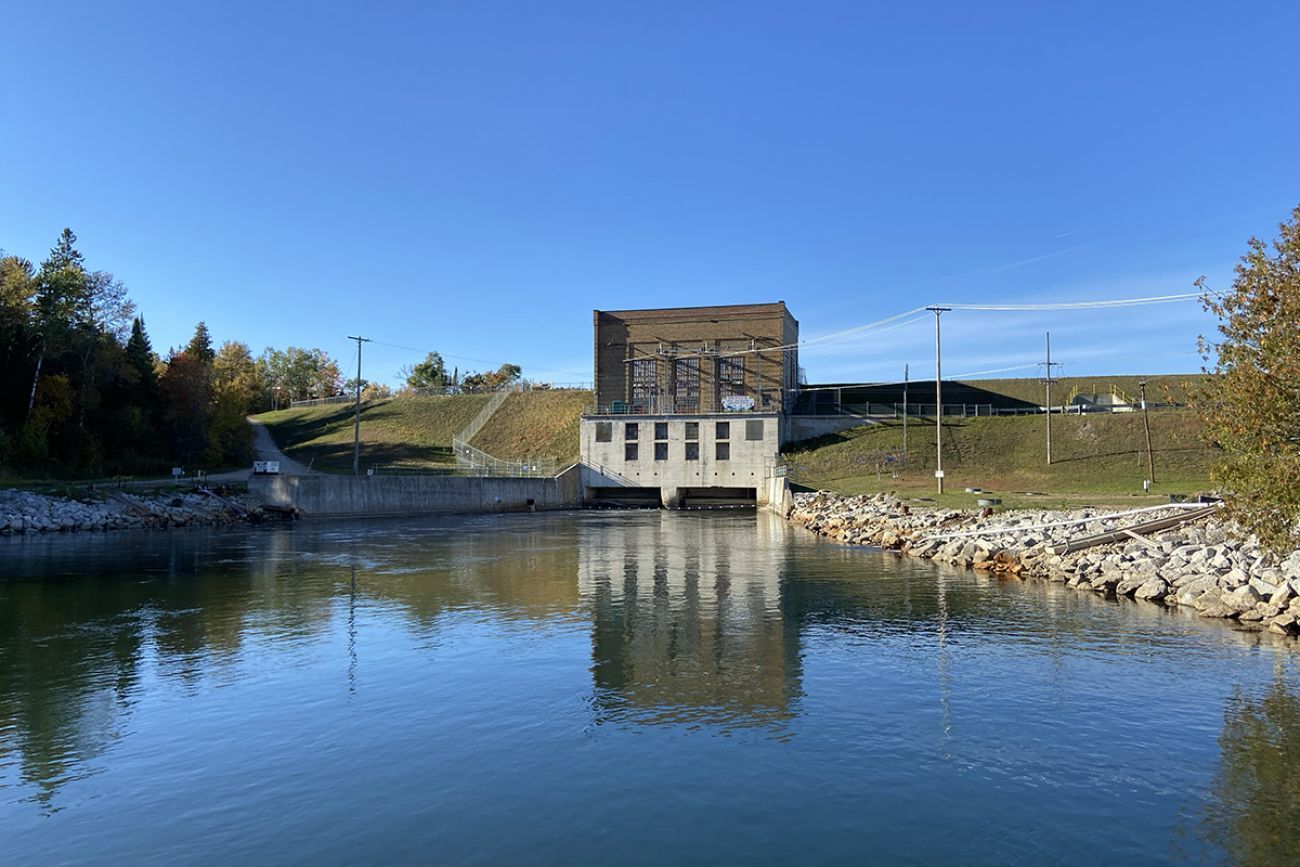Consumers Energy may get $770M from feds to fix century-old Michigan dams

- Consumers Energy is debating whether to keep, sell or demolish 13 aging Michigan dams
- Now, the company could be in line for more than $770 million in federal funding for dam safety upgrades
- The issue has split residents and conservationists because the dams are good for property values but bad for fish
More than $770 million in federal funding could be directed to Consumers Energy’s hydropower dams in Michigan, fueling speculation that the company may keep at least some of the aging structures intact.
Facing massive costs to maintain the 13 dams, which provide minimal electricity at a premium price, Consumers has publicly mulled an exit from the hydropower business for more than two years.
Company officials say they can’t justify making ratepayers cover the hundreds of millions in looming maintenance costs at the dams, when they could instead get electricity from far cheaper sources.
A funding announcement late Friday could change the equation.
The U.S. Army Corps of Engineers has invited Consumers to apply for up to $749 million in loans for safety upgrades at six dams. A week earlier, a separate federal program awarded $23 million for work on 10 of the dams.
The agency loan would finance repairs and upgrades at Rogers and Hardy dams on the Muskegon River, Hodenpyl Dam on the Manistee River, and Alcona, Loud and Five Channels dams on the Au Sable River.
In total, the Army Corps invited nearly $3.2 billion-worth of proposals from 18 dam owners across the country, including the City of Ann Arbor. The $749 million on the table for Consumers is more than any of the other 17 projects.
Consumers officials said while they intend to apply for the funding, they are still mulling whether to keep, sell, or dismantle the dams.
“While we’re still gathering information, we promise to continue communicating as openly as we can before we reach the point where we make any decisions,” company spokesperson Brian Wheeler said.
Fans of the dams view the funding invitation as a hopeful sign they could be sticking around, along with the reservoirs that have become prized local recreational lakes.
“It’s great news, assuming Consumers takes advantage of it,” said Mark Wilsey, who owns a house on the reservoir created by Mio Dam and founded a Facebook group dedicated to saving the dams.
Related:
- As Consumers mulls selling 13 dams, some in Michigan fear another disaster
- Uncertainty for Michigan rivers, residents as Consumers reconsiders its 13 dams
- Two years after Midland dam failures, still no action on safety reforms
- Consumers Energy tells Michigan residents it needs partners to keep hydro dams
River advocates have long fought to remove the dams. Bryan Burroughs, executive director of Michigan Trout Unlimited, argued that using taxpayer dollars to shore up the impoundments is just “subsidizing a problem.”
“Basically all taxpayers in the United States of America are then paying to keep dams that aren't doing a very good job at what they were designed to do,” Burroughs said.
Built an average of 106 years ago, the Michigan dams inundated 17,200 acres of land to create reservoirs that at the time provided a cheap, important energy source for a growing state.
Michigan’s energy mix has since evolved. The dams now generate just 1% of Consumers’ electricity, at nine times the cost of any other power source.
Reservoirs boost tourism and raise property values. But they also block fish migration and heat water, hurting fish like salmon and trout.
Consumers has one year to apply for the Army Corps loan. It’s unclear when the agency could make a final decision.
“Consumers Energy is committed to doing what’s right for our customers and the communities we serve,” Wheeler said. “That’s why we made clear that we’d be seeking other sources of funding that would lower costs and add to the discussion around the dams’ future.”
The federal program offering the loan, known as the Corps Water Infrastructure Financing Program, was created to fund dam repair, maintenance and upgrade projects that reduce flood damage, restore river ecosystems or improve navigation.
“Dam safety improvements typically reduce the probability of failure and therefore reduce the overall risk of flood damages occurring,” said Corps spokesperson Gene Pawlik.
As it prepares to apply, Consumers is reviewing bids from prospective buyers after it announced willingness to sell the dams for as little as $1 apiece.
“We will continue to review outside bids to own and operate our 13 dams through the rest of this year and evaluate what impact that these loans could potentially have,” Wheeler said.
Offloading the dams would free Consumers from a financial burden, but could present other risks.
Michigan utilities have a history of selling unwanted dams at cut-rate prices to new owners who can’t afford the cost of upkeep, ultimately leaving taxpayers to cover the bill.
After privately owned dams in Midland failed in 2020 and caused $200 million in property damage and $200 million in taxpayer-funded dam repair costs, a state task force recommended reforms designed to prevent sales to financially irresponsible dam owners, including a requirement they prove they can afford to safely operate their dams.
Nothing has come of the recommendation.
Michigan Environment Watch
Michigan Environment Watch examines how public policy, industry, and other factors interact with the state’s trove of natural resources.
- See full coverage
- Subscribe
- Share tips and questions with Bridge environment reporter Kelly House
Michigan Environment Watch is made possible by generous financial support from:
Our generous Environment Watch underwriters encourage Bridge Michigan readers to also support civic journalism by becoming Bridge members. Please consider joining today.
See what new members are saying about why they donated to Bridge Michigan:
- “In order for this information to be accurate and unbiased it must be underwritten by its readers, not by special interests.” - Larry S.
- “Not many other media sources report on the topics Bridge does.” - Susan B.
- “Your journalism is outstanding and rare these days.” - Mark S.
If you want to ensure the future of nonpartisan, nonprofit Michigan journalism, please become a member today. You, too, will be asked why you donated and maybe we'll feature your quote next time!






